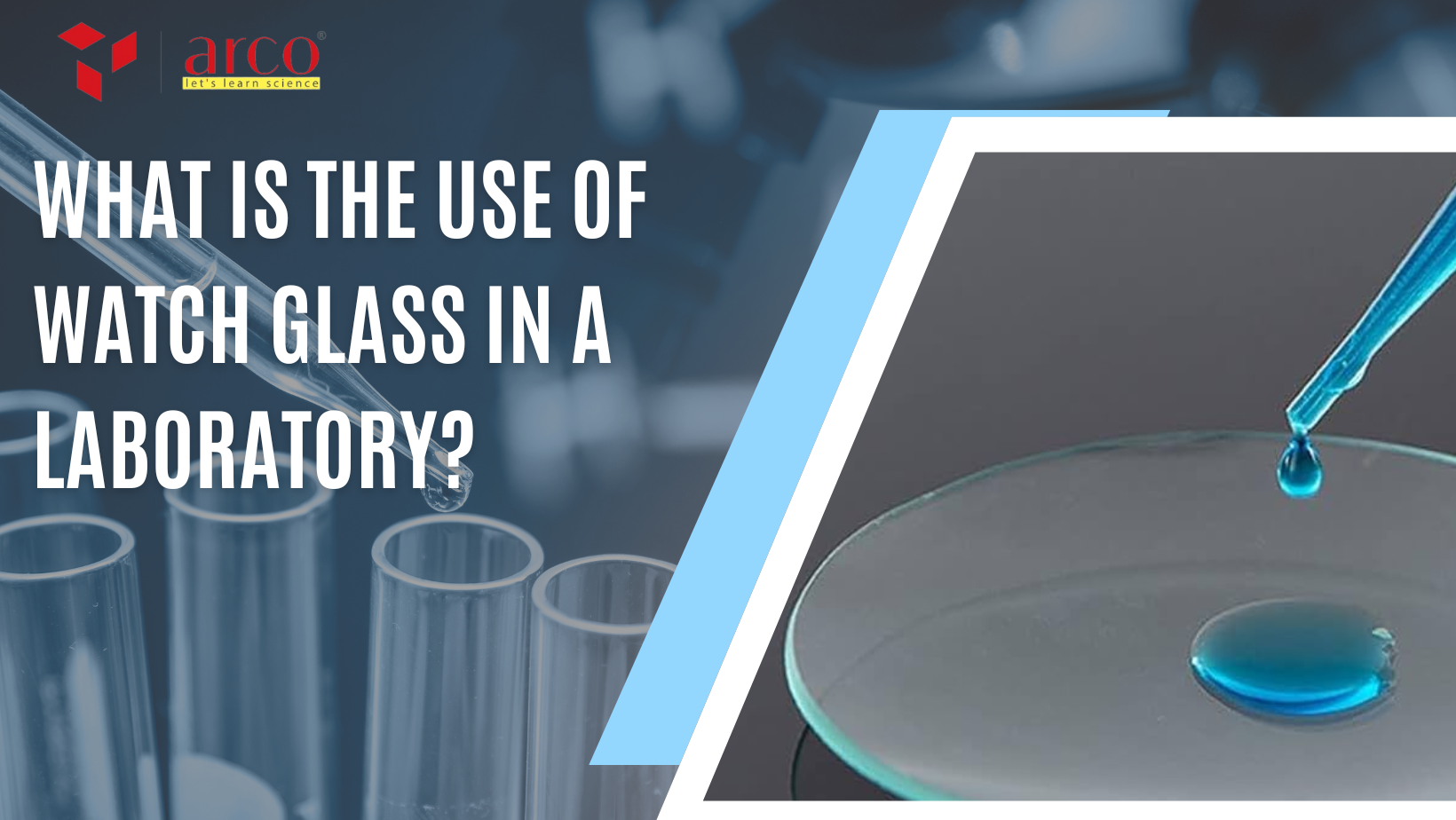What is the Use of Watch Glass in a Laboratory? Leave a comment
Worldwide, laboratories have a variety of vital tools with unique uses. The watch glass may seem basic, yet it’s essential to lab operations. You might have wondered, “What is a watch glass used for in chemistry?” Often referred to as dish glass, this modest, tiny, concave piece of glass is useful in chemistry and beyond.
Additionally, the watch glass function is quite flexible and serves uses including evaporation, weighing, and small-scale reaction observation. This instrument greatly helps researchers perform a range of precise and efficient operations.
In this blog, learn about watch glasses, their uses, advantages, and best practices for getting the most out of these essential tools.
What is a Watch Glass?
The term watch glass comes from a concave, round piece of glass like a watch face. Usually composed of premium, heat-resistant glass, its purpose is to survive laboratory environments like chemical exposure and high temperatures. The range of watch glasses lets one be flexible depending on the need for a particular experiment or process.
Also, the watch glass is designed for durability and adaptability, making it necessary for laboratory work.
Watch Glass Uses in Laboratory
Here are 6 primary uses of watch glass in the laboratory:
Evaporation
A watch glass is mainly used to allow liquids to evaporate. Especially if they wish to track the process or gather the residue left behind, scientists might let a tiny amount of liquid on the watch glass sit out naturally or under heat. In chemistry, this technique is often employed in crystallization procedures when a solution is let to evaporate and generates solid crystals.
Covering Containers
Covering beakers or other glassware with watch glasses helps to stop contamination of the contents. The watch glass covers loosely, unlike a solid lid, which is helpful for processes generating gasses as it stops splashing but still lets gasses escape.
Heating Small Quantities of Substances
Small quantities of a chemical are commonly heated straight over a flame using watch glasses. Their concave form guarantees uniform heating, but glass breaks if the heating is uneven or too firm; hence, care is required. This tool is convenient when working with tiny samples or seeing variations in color and texture.
Weighing Samples
In chemical labs, the watch glass serves as a small container for weighing tiny samples, especially where precision is crucial. It doesn’t affect sensitive readings and is easy to clean. A watch glass is perfect for this as it is thin and light; it will not significantly change the weight on a balance.
Holding Samples for Observation
Watch glasses make an excellent surface for viewing materials under a microscope or just with the unaided eye. Whether viewing powders, liquids, or biological samples, the watch glass’s translucent character and shallow depth make close examination of details simple.
Mixing Small Quantities of Substances
Small quantities of chemicals or other substances are also mixed using watch glasses. Also, this tool is beneficial in studies where just small amounts are needed, and scientists can evaluate reactions on a reasonable scale.
Overall, the watch glass serves a wide range of purposes, making watch glass function in any lab environment.
Benefits of Using Watch Glass
A laboratory environment gains several advantages from the adaptability of a watch glass. Here’s the reason this tool is so quite useful:
Cost-efficient
Compared to many other lab instruments, watch glasses are cheap. Since they may be used several times due to their endurance, labs of various kinds can afford them really reasonably.
Adaptable and Multi-Useful
The watch glass can have several purposes, as demonstrated by its several applications. Also, its adaptability to many chores and fit with other lab equipment make it a necessary tool that is flexible enough.
Easily for observation
A watch glass lets one clearly view the compounds put on it because of its glass composition. When visual observation is crucial, as in studies of crystallization, evaporation, or color change, this is very helpful.
Simple Cleaning and Handling
Their small weight makes handling watch glasses easy. They are also quite easy to clean, which is crucial to preventing cross-contamination and preserving accuracy in scientific research.
Heat-Tolerant and Chemical-resistant
Made from premium, usually borosilicate glass, watch glasses withstand high temperatures and are chemical resistant. Moreover, their dependability and safety for handling several materials—including reactive or hot compounds—come from this durability.
Best Practices in Laboratory
Consider these best practices while handling watch glasses to maximize this flexible instrument and guarantee laboratory safety:
Choose Appropriate Sizes
Watch glasses exist in different diameters, so pick a size appropriate for your particular work. Whether the watch glass covers a beaker, stores a sample, or enables evaporation, the proper size guarantees that it performs as intended.
Treat carefully
Though watch glasses are robust, they are still glass and break easily if handled harshly. Always handle them carefully, especially when moving supplies or setting anything on a heat source.
Avoid Extreme Temperature Changes
Changes in temperature can suddenly break the glass. After heating a cold surface, avoid laying a watch glass right on it; vice versa. Gradually let the glass cool to lengthen its lifetime and stop mishaps.
Sanitise Clearly Between Uses
Cleaning is really vital to prevent contamination between tests. To guarantee no residue remains—which might compromise the accuracy of your experiments—use a suitable cleaning solution and rinse completely.
Correct Arrangement During Heating
Make sure a material heated on a watch glass is equally covered over the heat source. If feasible, use a heat-resistant mat or support to prevent direct flame contact, thereby weakening or breaking the glass.
Proper Storage
Store watch glasses in a dry, safe area to prevent accidental damage. Carefully stacking them or keeping them in sections can help lower the chip or risk of breaking.
Wear Appropriate Lab Gear
On a watch glass, always handle chemicals or hot samples using lab gloves, goggles, and other safety gear. This will guard you from inadvertent breaking, splashes, or possible spills.
Avoid Overloading
Watch glasses are best for little doses, so try not to put too many drugs on them. Particularly in heating uses or as a cover, overloading can cause spillage from the glass.
Conclusion
Every lab should buy a watch glass or glass dish as their first piece of lab glassware. It is useful for many things, like letting liquids drain or holding samples for observation, which makes it an important tool for all areas of science. Additionally, it makes lab work more efficient, makes readings easier, and helps get accurate results when you use it properly. If you’re wondering about watch glass price, it’s an affordable yet essential investment for any lab.
At Arihant Lab, we believe that learning to utilize fundamental lab glassware will advance your work. Thus, we provide premium laboratory tools to assist your research activities. Working with us allows you to access dependable tools that improve your studies and investigations.
Therefore, get the most out of your lab glasses right now and see how they change your experiments. Get in touch with us if you need high-quality lab tools or help with your scientific findings.

